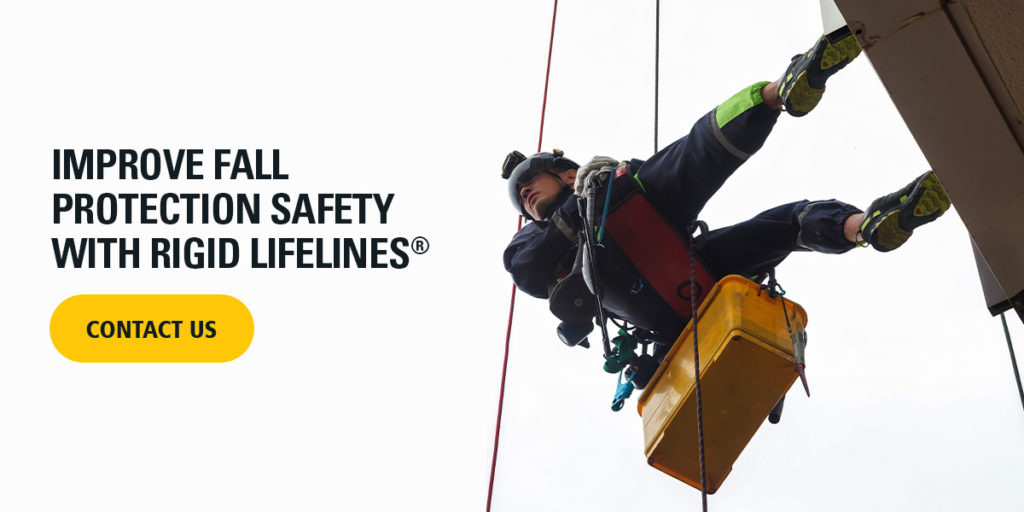Different Types of Harness Connection Points
June 4, 2024

Harness attachment points are critical safety features of full-body harnesses — without them, workers would have no way to attach their safety harnesses to the anchor points or fall protection systems. Connection points differ based on safety requirements, and fall protection equipment is only effective when used correctly. A better understanding of the most popular harness connection points and their location and functions helps promote safer full-body harness use.
Common Full-Body Harness Point Construction
Though the fall protection industry uses many safety harness types, some elements are standard. In most cases, safety harness anchor points are metal D-rings. A harness will have connection points based on how a company intends to use them.
Harness Connection Points, Locations, and Functions
Attachment points handle six standard functions — fall arrest, work positioning, travel restraint, descent, evacuation, and ladder climbing. Depending upon the type of at-height work performed, a harness could perform all of these or only one or two of them. Users must know the specific attachment points needed to accomplish those different functions.
Fall Arrest
The primary connection point for fall arrest is typically a D-ring positioned between the shoulder blades on the harness’ back. This location helps evenly distribute a fall arrest’s impact across the worker’s body, making it ideal for this function. Workers typically use these with self-retracting or shock-absorbing safety harness lanyard types, but these rings are also compatible with other fall arrest devices.
Work Positioning
Harnesses that support work-positioning functions usually feature dual D-rings on the front near the lower waist, allowing for hands-free work while remaining securely anchored. These systems provide fall restraint protection instead of fall arrest.
Travel Restraint
A travel restraint solution may be best for work performed near a fall hazard. These typically have a waist-level D-ring on the back to reduce the distance a worker can move. Workers remain anchored with a lanyard sufficient enough to reach their work area but short enough to keep them safely away from the hazard.
Descent/Ascent
Some jobs call for raising or lowering workers to reach a work area. In these cases, harnesses must have connection points for descent or ascent. These points are generally dual waist-level D-rings or one D-ring centered between the chest and waist. The back also often features a dorsal D-ring to connect another fall arrest solution.
Evacuation
You can identify harnesses used for evacuation by the pair of shoulder- or chest-level D-rings on the front. These harnesses also usually have an attachment point for a spreader bar that helps distribute worker weight during the process. These differ from ascent or descent harnesses because they are only for brief use.
Ladder Climbing
Harnesses designed for use with ladder-climbing fall arrest systems have one or two D-rings on the chest at armpit level. These typically have shorter safety harness lanyard types that keep workers close so the fall arrest device can perform at its best.
The Importance of Choosing the Correct Harness Setup
Workers must use fall protection under rules set by the Occupational Safety and Health Administration. These regulations require safety systems, with details differing based on specific hazards and industries involved.

In 2022, 865 employees died from a workplace fall, slip, or trip — 80.9% of these fatalities involved a fall to a lower level. Another 92,010 non-fatal falls occurred between 2021 and 2022 that resulted in lost work time due to injury. Both numbers show a measurable increase versus previous years, reinforcing the need to use the appropriate harness for the function.
How to Select the Best Fall Protection Harness and Lanyards
With so many different harness types available, it can seem challenging to choose the best one for your needs. Consider the following factors to help you decide.
- Task and function: The specific work environment and tasks requiring a harness primarily determine the ideal harness configuration and connection points workers need for improved safety.
- Quality and durability: For maximum value and protection, look for a well-constructed harness and connection points designed to withstand the demands of your work and last longer.
- Size and weight: A well-fitting setup capable of supporting your weight is essential, so always follow the manufacturer’s recommendations for sizing and capacity.
- Comfort and breathability: While safety is paramount, you’ll enjoy solutions designed for comfort and breathability when you spend long days working in them.
You can use these same basic guidelines to select among available safety harness lanyard types, assessing their quality, sturdiness, and suitability for the worker and task.
Improve Fall Protection Safety With Rigid Lifelines
At Rigid Lifelines, safety is always the priority. We design and engineer robust full-body safety harnesses compatible with our fall arrest and restraint systems to protect users like you against the unique hazards involved in working at height.
Find an authorized rep near you to learn more, and until next time, stay safe up there!

Categories
Share this post
Let us help you
Contact us today to find the perfect product fit for your job
